Cruises & Boat Travel · Europe · Germany · Netherlands · Regions · Speciality Travel · Western Europe
European river cruises are both dreamy and haunting
Cruising European rivers on a longboat, which is actually a floating five-star hotel, is an increasingly popular way to experience Europe. The convenience of unpacking once, time to explore port villages seldom mentioned in history books, and maximizing experiential time, cruises give travelers the gift of lingering and wandering. On a Viking cruise from Amsterdam to Budapest, I collected memories not mentioned in guidebooks or the companys promotional materials.
 Waking up to an unnamed, unknown ruin of a castle on the Rhine River seemed the continuation of a dream. I stayed in bed as we floated by a relic from medieval times. I envisioned knights and horses in armor protecting the castle, ladies embroidering tapestries behind castle walls, cooks and scullery maids, stable boys and blacksmiths. I wondered who was in love with whom. The story continues to grow in my mind, a daydream to embellish in the post-vacation doldrums.
Waking up to an unnamed, unknown ruin of a castle on the Rhine River seemed the continuation of a dream. I stayed in bed as we floated by a relic from medieval times. I envisioned knights and horses in armor protecting the castle, ladies embroidering tapestries behind castle walls, cooks and scullery maids, stable boys and blacksmiths. I wondered who was in love with whom. The story continues to grow in my mind, a daydream to embellish in the post-vacation doldrums.
 Kinderdijk, Netherlands, is a UNESCO world heritage site that has 19 windmills built in the mid-18th century and remain 20 feet below sea level. The boat docks across the street from the windmills, and a two-hour tour departed after breakfast. Most windmills are occupied by Dutch families who enjoy their three-story, circular living space. A windmill we visited is restored to its 18th Century appearance with cabinet beds, furnishings, clothing, and implements of the era.
Not on the tour was my solo stroll through the tiny town of Kinderdijk where flowering boughs draped a car like a whimsical garage. People were going about their mid-morning business with no concern for the tourist trade. A café was occupied by a few locals, and housewives were hanging laundry. I particularly liked flower planters that were actually wooden shoes in front of a modest house along the main street. The only postcards in Kinderdijk are sold at the windmill visitors center, not in the village.
Kinderdijk, Netherlands, is a UNESCO world heritage site that has 19 windmills built in the mid-18th century and remain 20 feet below sea level. The boat docks across the street from the windmills, and a two-hour tour departed after breakfast. Most windmills are occupied by Dutch families who enjoy their three-story, circular living space. A windmill we visited is restored to its 18th Century appearance with cabinet beds, furnishings, clothing, and implements of the era.
Not on the tour was my solo stroll through the tiny town of Kinderdijk where flowering boughs draped a car like a whimsical garage. People were going about their mid-morning business with no concern for the tourist trade. A café was occupied by a few locals, and housewives were hanging laundry. I particularly liked flower planters that were actually wooden shoes in front of a modest house along the main street. The only postcards in Kinderdijk are sold at the windmill visitors center, not in the village.
 In a town along the Rhine, history is preserved by an inscribed stone in a painted, plastered wall of a centuries-old home. The inscription reveals that the stone was ripped from the towns Jewish cemetery. So many Jewish graveyards were used as quarries for German construction projects for more than a thousand years. After decades of denial, German students are now learning of their countrys past hatreds and atrocities. Memorials to burned synagogues are incorporated into the architecture and public areas of many towns and villages.
In a town along the Rhine, history is preserved by an inscribed stone in a painted, plastered wall of a centuries-old home. The inscription reveals that the stone was ripped from the towns Jewish cemetery. So many Jewish graveyards were used as quarries for German construction projects for more than a thousand years. After decades of denial, German students are now learning of their countrys past hatreds and atrocities. Memorials to burned synagogues are incorporated into the architecture and public areas of many towns and villages.
 The longship offers more than staterooms with a view and gourmet food. It has public areas for visiting with new friends, getting lost in the view or a book, having a cup of tea or snifter of brandy or simply contemplating Old World discoveries and new insights. Going with the flow of a river is as calming as lying on a beach. Thoughts float along, some snagging on an idea as mundane as what to wear to dinner, some holding the possibility of a life change that may or may not be pursued.
The longship offers more than staterooms with a view and gourmet food. It has public areas for visiting with new friends, getting lost in the view or a book, having a cup of tea or snifter of brandy or simply contemplating Old World discoveries and new insights. Going with the flow of a river is as calming as lying on a beach. Thoughts float along, some snagging on an idea as mundane as what to wear to dinner, some holding the possibility of a life change that may or may not be pursued.
 The Danube River winds through Budapest and flows under gracious bridges colorfully lit at night. This city that survived the Nazis and then the communists is working hard to regain its historical buildings and its beauty. But as a tour guide said, “We shall never forget.”
Reminders of atrocities and memorials to heroes highlight yesterday’s horrors and today’s pride. Some memorials are humble and none, I think, is more poignant than “The Shoes on the Danube Bank.” This memorial honors the Jews who were killed by fascist militiamen during World War II. They were ordered to take off their shoes before being shot into the river.
The sculptor Gyula Pauer created sixty pairs of period-appropriate shoes and attached them to the stone embankment. At three points, cast iron signs have the following text in Hungarian, English, and Hebrew: “To the memory of the victims shot into the Danube by Arrow Cross militiamen in 194445. Erected 16 April 2005.
Some shoes are filled with flowers. Burned out votive candles attest to quiet, nighttime vigils.
Some shoes are so very small.
“Never again,” a prayer, a plea, a promise. A fitting end to a cruise through Central Europe.
The Danube River winds through Budapest and flows under gracious bridges colorfully lit at night. This city that survived the Nazis and then the communists is working hard to regain its historical buildings and its beauty. But as a tour guide said, “We shall never forget.”
Reminders of atrocities and memorials to heroes highlight yesterday’s horrors and today’s pride. Some memorials are humble and none, I think, is more poignant than “The Shoes on the Danube Bank.” This memorial honors the Jews who were killed by fascist militiamen during World War II. They were ordered to take off their shoes before being shot into the river.
The sculptor Gyula Pauer created sixty pairs of period-appropriate shoes and attached them to the stone embankment. At three points, cast iron signs have the following text in Hungarian, English, and Hebrew: “To the memory of the victims shot into the Danube by Arrow Cross militiamen in 194445. Erected 16 April 2005.
Some shoes are filled with flowers. Burned out votive candles attest to quiet, nighttime vigils.
Some shoes are so very small.
“Never again,” a prayer, a plea, a promise. A fitting end to a cruise through Central Europe.

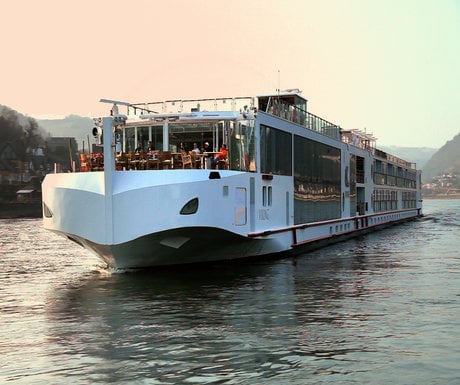 Waking up to an unnamed, unknown ruin of a castle on the Rhine River seemed the continuation of a dream. I stayed in bed as we floated by a relic from medieval times. I envisioned knights and horses in armor protecting the castle, ladies embroidering tapestries behind castle walls, cooks and scullery maids, stable boys and blacksmiths. I wondered who was in love with whom. The story continues to grow in my mind, a daydream to embellish in the post-vacation doldrums.
Waking up to an unnamed, unknown ruin of a castle on the Rhine River seemed the continuation of a dream. I stayed in bed as we floated by a relic from medieval times. I envisioned knights and horses in armor protecting the castle, ladies embroidering tapestries behind castle walls, cooks and scullery maids, stable boys and blacksmiths. I wondered who was in love with whom. The story continues to grow in my mind, a daydream to embellish in the post-vacation doldrums.
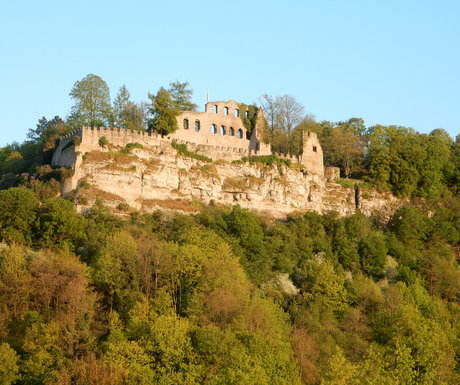 Kinderdijk, Netherlands, is a UNESCO world heritage site that has 19 windmills built in the mid-18th century and remain 20 feet below sea level. The boat docks across the street from the windmills, and a two-hour tour departed after breakfast. Most windmills are occupied by Dutch families who enjoy their three-story, circular living space. A windmill we visited is restored to its 18th Century appearance with cabinet beds, furnishings, clothing, and implements of the era.
Not on the tour was my solo stroll through the tiny town of Kinderdijk where flowering boughs draped a car like a whimsical garage. People were going about their mid-morning business with no concern for the tourist trade. A café was occupied by a few locals, and housewives were hanging laundry. I particularly liked flower planters that were actually wooden shoes in front of a modest house along the main street. The only postcards in Kinderdijk are sold at the windmill visitors center, not in the village.
Kinderdijk, Netherlands, is a UNESCO world heritage site that has 19 windmills built in the mid-18th century and remain 20 feet below sea level. The boat docks across the street from the windmills, and a two-hour tour departed after breakfast. Most windmills are occupied by Dutch families who enjoy their three-story, circular living space. A windmill we visited is restored to its 18th Century appearance with cabinet beds, furnishings, clothing, and implements of the era.
Not on the tour was my solo stroll through the tiny town of Kinderdijk where flowering boughs draped a car like a whimsical garage. People were going about their mid-morning business with no concern for the tourist trade. A café was occupied by a few locals, and housewives were hanging laundry. I particularly liked flower planters that were actually wooden shoes in front of a modest house along the main street. The only postcards in Kinderdijk are sold at the windmill visitors center, not in the village.
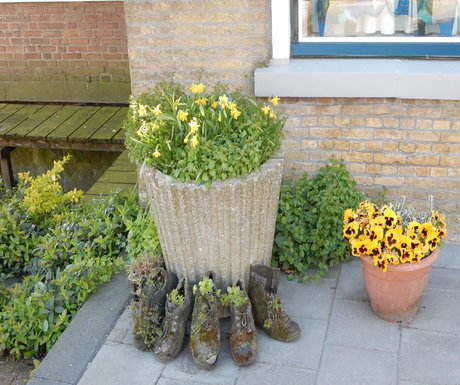 In a town along the Rhine, history is preserved by an inscribed stone in a painted, plastered wall of a centuries-old home. The inscription reveals that the stone was ripped from the towns Jewish cemetery. So many Jewish graveyards were used as quarries for German construction projects for more than a thousand years. After decades of denial, German students are now learning of their countrys past hatreds and atrocities. Memorials to burned synagogues are incorporated into the architecture and public areas of many towns and villages.
In a town along the Rhine, history is preserved by an inscribed stone in a painted, plastered wall of a centuries-old home. The inscription reveals that the stone was ripped from the towns Jewish cemetery. So many Jewish graveyards were used as quarries for German construction projects for more than a thousand years. After decades of denial, German students are now learning of their countrys past hatreds and atrocities. Memorials to burned synagogues are incorporated into the architecture and public areas of many towns and villages.
 The longship offers more than staterooms with a view and gourmet food. It has public areas for visiting with new friends, getting lost in the view or a book, having a cup of tea or snifter of brandy or simply contemplating Old World discoveries and new insights. Going with the flow of a river is as calming as lying on a beach. Thoughts float along, some snagging on an idea as mundane as what to wear to dinner, some holding the possibility of a life change that may or may not be pursued.
The longship offers more than staterooms with a view and gourmet food. It has public areas for visiting with new friends, getting lost in the view or a book, having a cup of tea or snifter of brandy or simply contemplating Old World discoveries and new insights. Going with the flow of a river is as calming as lying on a beach. Thoughts float along, some snagging on an idea as mundane as what to wear to dinner, some holding the possibility of a life change that may or may not be pursued.
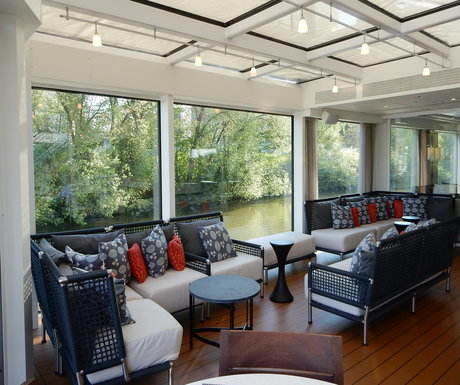 The Danube River winds through Budapest and flows under gracious bridges colorfully lit at night. This city that survived the Nazis and then the communists is working hard to regain its historical buildings and its beauty. But as a tour guide said, “We shall never forget.”
Reminders of atrocities and memorials to heroes highlight yesterday’s horrors and today’s pride. Some memorials are humble and none, I think, is more poignant than “The Shoes on the Danube Bank.” This memorial honors the Jews who were killed by fascist militiamen during World War II. They were ordered to take off their shoes before being shot into the river.
The sculptor Gyula Pauer created sixty pairs of period-appropriate shoes and attached them to the stone embankment. At three points, cast iron signs have the following text in Hungarian, English, and Hebrew: “To the memory of the victims shot into the Danube by Arrow Cross militiamen in 194445. Erected 16 April 2005.
Some shoes are filled with flowers. Burned out votive candles attest to quiet, nighttime vigils.
Some shoes are so very small.
“Never again,” a prayer, a plea, a promise. A fitting end to a cruise through Central Europe.
The Danube River winds through Budapest and flows under gracious bridges colorfully lit at night. This city that survived the Nazis and then the communists is working hard to regain its historical buildings and its beauty. But as a tour guide said, “We shall never forget.”
Reminders of atrocities and memorials to heroes highlight yesterday’s horrors and today’s pride. Some memorials are humble and none, I think, is more poignant than “The Shoes on the Danube Bank.” This memorial honors the Jews who were killed by fascist militiamen during World War II. They were ordered to take off their shoes before being shot into the river.
The sculptor Gyula Pauer created sixty pairs of period-appropriate shoes and attached them to the stone embankment. At three points, cast iron signs have the following text in Hungarian, English, and Hebrew: “To the memory of the victims shot into the Danube by Arrow Cross militiamen in 194445. Erected 16 April 2005.
Some shoes are filled with flowers. Burned out votive candles attest to quiet, nighttime vigils.
Some shoes are so very small.
“Never again,” a prayer, a plea, a promise. A fitting end to a cruise through Central Europe.
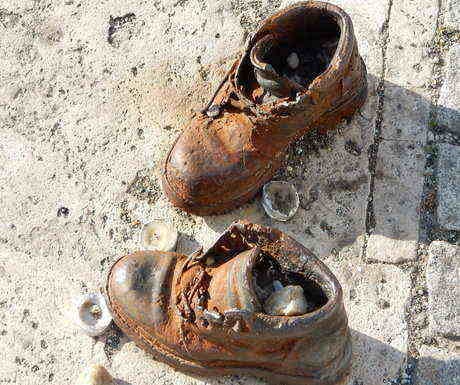
Did you enjoy this article?
Receive similar content direct to your inbox.

